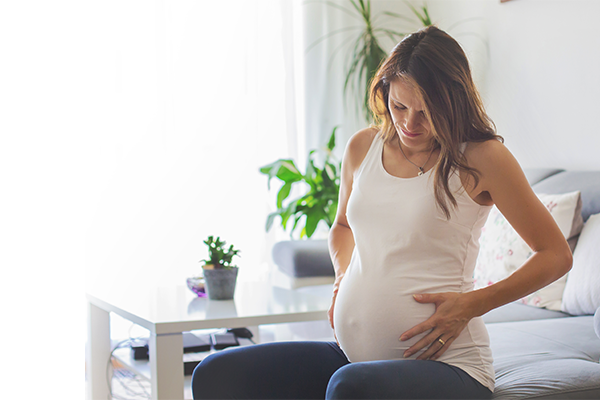Sciatica is a sharp, intermittent back pain. Complaints of this kind are common during pregnancy. They are caused by hormonal changes in the woman’s body and the increasing weight of the baby. If left untreated, sciatica during pregnancy can even be a reason for a cesarean section.
Persistent pain should ease once the pregnant woman changes her posture. If that doesn’t help and the pain worsens, a doctor may consider using pain-relieving and anti-inflammatory ointments that are safe during pregnancy.
What is sciatica?
Sciatica is a condition of unknown cause. Its main feature is intense, radiating back pain that can prevent those affected from carrying out everyday activities. Contributing factors include:
- Overweight
- Degenerative changes in the spine
- Nerve fiber damage
- Disc disorders
- Osteoporosis
- Diabetes
- Tumors pressing on the nerve
Pregnancy can also trigger sciatica. Treatment during pregnancy is challenging due to limited therapeutic options.
Sciatica in pregnancy
Sciatica during pregnancy can arise from several factors. One is hormonal changes in the woman’s body, which lead to loosened ligaments in the spine and increased joint mobility — one of the reasons sciatica can appear as early as the first trimester.
The mother’s and baby’s weight also play a role. The more weight a pregnant woman gains, the more likely she is to experience symptoms. Additionally, the growing baby and expanding uterus press on and irritate the sciatic nerve, causing pain.
Many pregnant women — especially those with severe sciatica — are unsure how to manage the discomfort. Unfortunately, pregnancy limits treatment options, so only methods that are safe for the baby may be used.
Symptoms of sciatica in pregnancy
Although back pain is common during pregnancy, sciatica is relatively easy to recognize.
Typical symptoms:
- Sudden onset of intense pain
- Pain in the lower back radiating to the buttocks, back of the thighs, and down to the foot
- Muscle weakness in the legs
- Numbness and burning sensations
- In some cases, even signs of paralysis
If the pain is severe and the due date is near, a cesarean section may be considered, as natural birth could place excessive strain on the spine. Pregnant women with sciatica might also consider a water birth or giving birth in a squatting position — provided the hospital offers these options and no other medical conditions are present.
Treatment of sciatica during pregnancy
Treatment options for sciatica during pregnancy are very limited due to restricted use of pain medications. The only safe painkiller is paracetamol (acetaminophen), which can be taken for severe pain — but only up to two tablets per day. Pregnant women should note that some paracetamol products may contain caffeine (up to 130 mg in two tablets), which can be harmful to the baby if the recommended daily dose is exceeded.
A key part of therapy includes gentle exercises to relieve sciatic pain. These should particularly strengthen the pelvic floor, abdominal, and back muscles. The type and frequency of the exercises are determined by a physical therapist and can later be continued at home. Maternity belts, available in online or rehab stores, can help stabilize the spine. Swimming and relaxing massages are also recommended.
Other methods to relieve symptoms:
- Cold or warm compresses on the painful area
- Lying down with legs bent at a 90° angle
- Frequent rest
- Avoiding heavy lifting
- Maintaining correct posture
- Regular physical activity, such as walking
In some cases of severe pain, pain-relieving and anti-inflammatory ointments deemed safe during pregnancy can be used — but only in moderation!
Another method of pain management is electrostimulation. Low-frequency electrical currents can also be helpful during labor pain.










